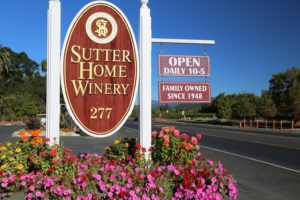
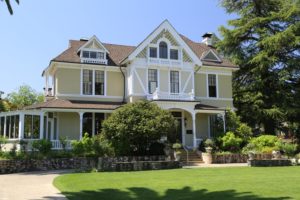
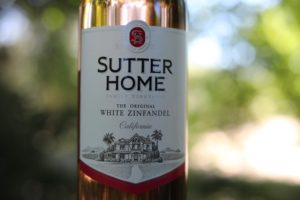 Sutter Home Winery. The property that houses the Sutter Home tasting room and what was the old Sutter Home Winery dates back to 1874 as it relates to wine making operations. This site was originally home to the John Thomann Winery and Distillery built in 1874 – Thomann had purchased this property from one of the Napa Valley’s original vineyard owners, John Lewelling (the Lewelling family continues to farm in the valley today and also produced their own wines). Thomann also built the large Victorian (dates from 1884) which many years later would be used as the image on Sutter Home’s wine labels. Thomann’s primary vineyards were not on site of the winery but were rather located near the tiny community of Deer Park below what is now the Howell Mountain sub appellation.
Sutter Home Winery. The property that houses the Sutter Home tasting room and what was the old Sutter Home Winery dates back to 1874 as it relates to wine making operations. This site was originally home to the John Thomann Winery and Distillery built in 1874 – Thomann had purchased this property from one of the Napa Valley’s original vineyard owners, John Lewelling (the Lewelling family continues to farm in the valley today and also produced their own wines). Thomann also built the large Victorian (dates from 1884) which many years later would be used as the image on Sutter Home’s wine labels. Thomann’s primary vineyards were not on site of the winery but were rather located near the tiny community of Deer Park below what is now the Howell Mountain sub appellation.
However, the roots of the name Sutter Home date back to 1890 when a couple, Emile and Caroline Leuenberger purchased land, also near the tiny community of Deer Park and called their winery and property, Sutter Home, named after Caroline’s father John Sutter. Five years after their purchase they founded Sutter Home Winery and Distillery in San Francisco and is where they blended and bottled wines made from grapes from their Napa Valley property.
The April 1906 San Francisco earthquake & subsequent fire destroyed their business. Moving their operations to the Napa Valley later that same year, they purchased the old Thomann Winery and Distillery just south of St. Helena. Already well established with the name Sutter Home, they immediately renamed this property to Sutter Home and prominently painted the name of the winery across the roof of the winery building.
This old winery and accompanying property were purchased by the Trinchero Family (John Trinchero) and a partner, Louis Carlesimo with escrow closing in early 1947. Their first harvest and vintage were in 1948. The agricultural landscape of the Napa Valley in the late 1940’s post World War II was dramatically different then it is today. Crops included walnuts and plums and vegetables including lots of tomatoes. Also, cattle were commonly grazing in the valley.
And there were far fewer wineries then, compared to in the valley today. Only 6 Napa Valley based wineries have produced continuous vintages under the same name longer then Sutter Home – they are: Beringer (1876), Nichelini (1890), Beaulieu Vineyard (1904, founded 1900), Inglenook (1933, founded 1879 – we are counting Rubicon Estate here, as in the 1980s, as a stand-alone brand Inglenook did not produce wine for at least one vintage), Louis Martini (1933 – mid 1930s) and Charles Krug (1946, founded 1861).
When the Trinchero’s purchased the property, the old winery barn was still standing – the floor was still dirt and there was no electricity. And it hadn’t been used since right before prohibition. At the time, John and Louis paid $12,000 for the winery and the barn on 3.5 acres. The old Victorian was not purchased by the Trinchero family until 1986. Rather than name the winery after themselves, the brothers decided to keep the existing name, especially since “Sutter Home Winery” was still showing – painted on the sloped roof the barn (facing the Highway 29 side). During Prohibition on the front of the barn, the word winery had been blocked out. Louis sold his half of the partnership in 1948 – and Sutter Home became wholly owned by the Trinchero Family.
Eventually John’s brother Mario and his son Bob Trinchero bought out John’s share of the business in 1960. Mario and his wife Mary had three children, Bob, Roger and Vera (Vera died in 2014). Today the the winery is still very much family run with multiple generations of the family involved.
Sutter Home opened their first tasting room in 1947 – a unique space to be sure, housed inside a seven-thousand-gallon old redwood tank with an access door cut into it. This tank was connected with several others in later years and served as their tasting room until the 1970’s when they finally built a new hospitality space. Up until the mid 1970’s any tasting room employee was a Trinchero family member. Perhaps rather surprising, Sutter Home did not own vineyards for decades but today own more than 9,000 acres in California (mainly outside of the Napa Valley). Their first vineyard purchase was 15 acres near Calistoga in 1983.
In the early 1960s, due to financial problems and unable to secure a loan from the local branch of Bank of America, the Trinchero family put Sutter Home on the market. But there were no buyers and eventually they were able to secure a loan to keep the business afloat.
Today Sutter Home is still family owned – it is part of Trinchero Family Estates (TFE), the largest family-owned winery based in the Napa Valley, and the second largest family-owned winery in the world behind GALLO. As of our latest update to this review, TFE owns more than 50 different wineries or brands. Pretty heady stuff for having weathered such tough economic times during their early history.
Sutter Home currently makes a wide variety of wines – and has a long history of doing so – although in the early days they were making beverages other than still wines including vermouth, marsala, sherry and sparkling wines. And they also developed and sold their own wine vinegars including some that were infused with garlic and or various herbs.
Select Wines
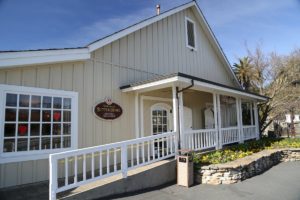
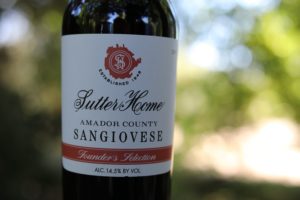 Whites
Whites
The Sutter Home California White Zinfandel (non-vintage) used a 100% recyclable cork with one end printed with ‘cheers’ and the other end with ‘enjoy’. This wine is medium salmon in color; the bouquet is fairly shy and shows aromas of light shishito peppers, cranberry and wild strawberry. Sweet and simple on the palate with a supple and rounded texture, this wine offers flavors of watermelon jolly rancher, pomegranate and strawberries. It is a very balanced bottling that is consistent in its flavor from start to finish. It lingers with a slight sweet and sour tangy note. This wine is best chilled and enjoyed while languidly lying on the edge of a pool on a hot summer day. Only 9.5% alcohol.
The Sutter Home California Sauvignon Blanc (non-vintage) is pale yellow in color; the bouquet is restrained and offers aromas of lemon peel, dried haystack and deeper in the aromatics, hints of vanilla. This uncomplicated and simple wine is balanced across the palate offering light flavors of grapefruit, cut grass, green apple and honeydew melon. Offers medium acidity which does not show as being overly bright or lively. This is a lighter styled showing of this variety.
The 2018 Sutter Home California Pinot Grigio Lot 1 Founder’s Selection is medium gold in color; the bouquet offers sweet aromas of pear, red apple, melon, grass, citrus blossom and some sweeter notes of vanilla. The palate is clean and balanced from start to finish showing flavors of citrus including lemon juice, green apple, and green guava. The finish offers a tangy note and lingers with a grassy and grapefruit-like nuance and mouth-watering acidity.
Reds
The Sutter Home California Cabernet Sauvignon (non-vintage, tasted in 2022 as a young bottling) is dark ruby in color; the bouquet offers an up-front wood-spice and called us back to our youth and our family vacations in Greeley Hill California, a small town located among the oak and pine forests of California’s Sierra Nevada foothills. These aromas immediately reminded us of sweaty leather gloves covered in oak sawdust while helping chop and chainsaw fallen oak branches on our friend’s ranch on hot summer days – the sweat pouring off our face. And smelling this bouquet also reminded us of frigid winter days at the same property huddled up next to a roaring fire in the modular trailer where we stayed with all the oak logs, we harvested in the summer stacked next to the fireplace. These vacations produced some of our favorite childhood memories; this wine’s bouquet is absolutely the aromas of nostalgia. The palate is light but juicy and mouthwatering with fruit flavors of red cherry, currant and mulberry juice lingering with a dominating leather and toasty oak nuance.
The 2019 Sutter Home Amador County Sangiovese Founder’s Selection is medium ruby in color; the bouquet offers both a toasted oak spice and an initial note of sweaty leather, along with underlying notes of vanilla, espresso, nutmeg and a hint of black licorice. The palate offers plenty of flavor including of dark cherry and spicy plums. This bottling offers a savory and spicy finish between dark spices including crushed peppercorn along with toasted oak and dark fruit. The accompanying tannins are dark and show a light gravelly texture which persists for some time. Consider pairing with spaghetti or other pasta or something from the BBQ.
White Zinfandel/Deaver Vineyards/Darrell Corti
Sutter Home is well-known for accidentally discovering White Zinfandel which in our experience is the wine most “non wine drinkers” seem to be most familiar with. In 1972 Bob decided to make a Zinfandel (from Deaver Vineyard in Plymouth, Amador County) – Sutter Home purchased their first grapes from this particular vineyard in 1968 after an introduction was made with Ken Deaver by Sacramento retailer, Darrell Corti. Darrell was inducted into the Culinary Institute of America Vintner’s Hall of Fame in 2008 for numerous contributions to the wine world including his involvement with Sutter Homes’ early White Zinfandel). Bob Trinchero is also a member of the Vintner’s Hall of Fame.
Looking back, what might have been considered a travesty at the time – producing White Zinfandel from Zinfandel vines dating back to the 1860s ultimately turned out to be a fortunate accident. This wine came at a time when interest in Zinfandel was waning – but the ensuing demand for this popular style of wine – helped saved Zinfandel vineyards up and down the state, especially some of the historical vineyards from being removed.
Ken’s relatives originally came to this part of the state to mine gold but found greater riches in supplying agricultural products to the miners and those who stayed in the area after the easy riches had played out. In addition to grapes, they grew apricots, peaches and apples among other crops and raised livestock. The first commercial vintage from Deaver Vineyards was their 1975 Zinfandel. Over the years they have created quite a following for their Zinfandel – a long but gentle aging in neutral oak – showcasing the varietal characteristics rather than the oak influences.
We walked through this historical block of Zinfandel with Ken (one of the oldest in the state still producing wine commercially). Spending time among these old vines is almost spiritual – dry farmed, head pruned, year after year still producing grapes. They were planted sometime in the early 1860s – for historical perspective, this was the same time as the early Civil War years. And the Trinchero’s still purchase fruit from this particular block – although rest assured, they are not using this particular Zinfandel anymore to make their White Zinfandel.
Remarkably, these are not the oldest vines at Deaver Vineyard; Mission grapes were planted by horse and plow by Ken’s great grandfather John Davis around 1853/1854 – merely several years after the start of the California Gold Rush. From a California historical viticulture perspective, this is the holy grail. This 5-acre block is thought to contain the oldest still commercially producing vines in the state of California. For many years the family sold these to home winemakers – who enjoyed blending the Mission wines into their Zinfandel – creating wines that were easier to drink young. And for a period of time, Swanson Vineyards purchased these grapes to make their Angelica (in our humble opinion one of the top dessert wines coming from a Napa Valley based producer). Deaver Vineyards bottles their own Angelica from these grapes – using them both for the wine + the brandy that they later use to fortify.

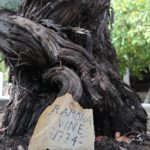 And for an Angelica from a vine that dates some 80 years before the Deaver Vineyard Mission grapes were planted, we must travel south to Los Angeles. Another nonrelated Angelica worth pursuing is made by Angeleno Wine Company in Los Angeles from the Ramona Vine dating back to 1774, growing at Mision San Gabriel. Here is what we wrote years ago after a visit to this vine:
And for an Angelica from a vine that dates some 80 years before the Deaver Vineyard Mission grapes were planted, we must travel south to Los Angeles. Another nonrelated Angelica worth pursuing is made by Angeleno Wine Company in Los Angeles from the Ramona Vine dating back to 1774, growing at Mision San Gabriel. Here is what we wrote years ago after a visit to this vine:
“A highlight of a visit here is seeing the Ramona Vine – a mission grape variety that was planted in 1774. This has to be the oldest living planted grapevine in California. Its grapes fall on the ground every year; this would be one of the most unique, limited production and potentially expensive wines produced in the states if wine was made from this single vine! It is still thriving and producing plenty of grapes – its trunk is the size of a good-sized tree and its “arms” which grow on the sizable arbor are massive. At one point Mission San Gabriel was the largest winery in the state of California and provided wine to other California missions. In fact, this mission planted the first vineyard of any mission. Other ancient vines also contribute to this long arbor (probably 150 feet long) which runs along the outside of the church.”
And this vineyard block was larger at one time – with Mission grapes being a tough sell, Ken began removing the old vines some years ago – ultimately taking out about 3 acres before his wife caught him and told him to stop. Thank goodness she did – helping play a role in preserving this old part of California’s mining and viticulture heritage. Today both this block and the old Zinfandel are owned by Ken’s sister Betty.
Deaver Vineyard, 1860s Zinfandel block (source of Sutter Home’s original White Zinfandel)
Deaver Vineyard 1853/1854 Mission block
Wanting to produce a Zinfandel that was more concentrated in flavor, color and structure – Bob bled off some of juice after pressing the grapes. This resulting clear white Zinfandel was in a tank – not knowing what to do with this, Bob asked a friend and wine merchant from Sacramento, Corti for advice. Darrel said to call it ‘Oeil de Perdrix’ – a difficult to pronounce name for the average American – that translates to “Partridge’s eyes” in French. It refers to a type of rosé wine that has been made in Europe for hundreds of years (originally from the Champagne region of France but now is made in Switzerland).
Bob submitted the name for label approval, but the federal government indicated he needed an English translation. A simple name for this wine ultimately was part of its appeal – Bob cleverly chose the name White Zinfandel. He bottled 220 cases of this wine and sold 1/2 of it to Darrell (bottled in green bottles). Of historical note, this first vintage of White Zinfandel was bone dry (no residual sugar).
Bob changed the style of the Sutter Home White Zinfandel forever with the 1975 vintage. Bob had 1000 gallons of clear almost dry Zinfandel wine in a 1200-gallon tank. Needing to fill the rest of the space in the tank he added Deaver’s non fermented Mission grape juice to the Zinfandel. Ultimately the fermentation stopped at about 2% residual sugar and the blend became pink in color. Bob bottled this, dropped the ‘Oeil de Perdrix’, kept the White Zinfandel name despite it now being a pinkish hue and demand quickly sky rocketed; they have since sold millions and millions of cases of White Zinfandel.
A bottle of White Zinfandel is on display at the National Museum of American History at the Smithsonian Museum in Washington DC.
A quote prior in the book Napa Wine Country by Earl Roberge, published in 1974 sums up Sutter Home prior to the success of their White Zinfandel, “Starting with a venerable ruin of a building in 1943, the Trinchero family has patiently built it up, year by year, replacing old cooperage with stainless steel fermenters and oaken aging tanks till they today have a functional winery that is an intriguing blend of the latest equipment cheek by jowl with some that would qualify for space in a museum … but which nevertheless fulfills its function.”
This same book describes Sutter Home then as, “one of the smaller, more picturesque home type wineries on Highway 29.”
—
Interestingly, the 1970s are known as a time when Napa Valley was still making restrained (low for today) alcohol wines. But one Zinfandel Sutter Home produced in 1977 was actually 17% alcohol a far cry from the under 10% in alcohol White Zinfandel Sutter Home produces today.
The Sutter Home brand has become the Trinchero’s mass marketed wine made for wide consumption and mainstream public demand. The wines are typically made in very large quantities and contain grapes from many locations mostly throughout California. In addition, these wines are light, often sweet and not nearly as complex as some of the smaller boutique wineries but are well-made wines and for the price are a good value.
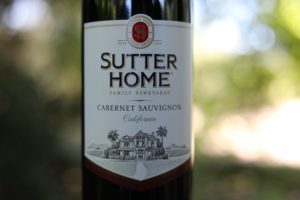
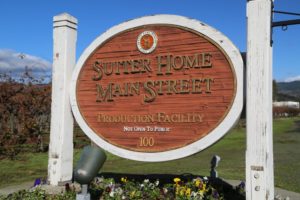 Sutter Home produces some of the most affordable wines in all of the Napa Valley (although one should be aware that the grapes for the Sutter Home wines are not from the Napa Valley). Similar to other large Napa based wineries offering wines at such affordable prices, Sutter Home’s production is sizable, sourcing grapes from outside of the county – all of this helps cut down on overall costs. Where else in Napa Valley can one find a 750ml Muscat dessert wine for $7 or a Cabernet Sauvignon for $8?! Sutter Home maintains a large production facility on the other side of the highway from their tasting room and a massive state-of-the-art production winery near Lodi (some 660,000 square feet).
Sutter Home produces some of the most affordable wines in all of the Napa Valley (although one should be aware that the grapes for the Sutter Home wines are not from the Napa Valley). Similar to other large Napa based wineries offering wines at such affordable prices, Sutter Home’s production is sizable, sourcing grapes from outside of the county – all of this helps cut down on overall costs. Where else in Napa Valley can one find a 750ml Muscat dessert wine for $7 or a Cabernet Sauvignon for $8?! Sutter Home maintains a large production facility on the other side of the highway from their tasting room and a massive state-of-the-art production winery near Lodi (some 660,000 square feet).
Sutter Home is a very environmentally friendly winery. Wine making starts in the vineyards – they utilize a huge composting program and plant beneficial cover crops which attract the “good” insects. Water management is also a key component of their vineyard operations.
They typically use much less water per vine than most wineries. Many wineries are unable to recycle wastewater into their vineyards, not so with Sutter Home as they use over 50 million gallons of recycled wastewater each year to water their vines. Wine bottle and other packaging materials are also partially made from recycled materials.
Hospitality
There is no other Napa Valley based winery making all of the following styles of wine, White Zinfandel, White Merlot and White Cabernet Sauvignon. And the wines sold here are often non-vintage and California appellation. Because the prices are so good, during our visits over the years we often see customers purchasing by the case rather than by the bottle.
These wines are fairly light, slightly sweet and very easy to drink. Those who enjoy this style of wine (patio and pool party sippers) will find good company at Sutter Home’s tasting room. We have been to their long tasting counter several times including in the winter when we were the only ones there; however, this is typically not common and, in the summer, and during harvest, the tasting room can be very crowded – a mix of tour bus passengers and others.
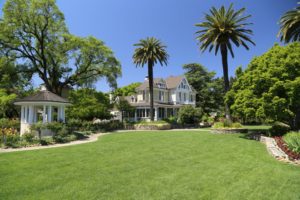
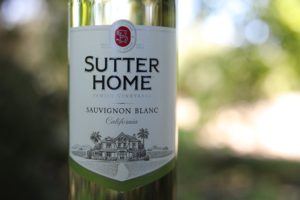 Their tasting room is located just south of St. Helena along the busy wine strip of Highway 29 which is where some of Napa’s most visited wineries are located. Select tastings are complimentary of several wines. Compared to many of the other 30 and 40 something customers who frequent other Napa Valley walk in wineries; this winery tends to appeal to an older crowd although their website is marketed to a younger generation.
Their tasting room is located just south of St. Helena along the busy wine strip of Highway 29 which is where some of Napa’s most visited wineries are located. Select tastings are complimentary of several wines. Compared to many of the other 30 and 40 something customers who frequent other Napa Valley walk in wineries; this winery tends to appeal to an older crowd although their website is marketed to a younger generation.
It is amusing to watch folks running through the entire “perceived” way to formally sample wines when they are tasting $8 and $9 Sutter Home light sweet wines. Visitors can walk around the small gardens and take some pictures of the famous “Sutter Home” which is not open to the public as it is for corporate use. However, the estate is stunning especially in the springtime when all the flowers are in bloom.
And in a very unusual offering for a Napa Valley based winery, Sutter Home (since 1992) produces alcohol free wines bottled under the label Fre Wines. The alcohol is stripped from the wines through a process that uses centrifugal force combined with nitrogen gas and temperature. And while these wines are alcohol free, there actually is just a tiny bit of alcohol that remains – typically under 0.5%. One won’t get buzzed from drinking a few bottles or more! Several lighter style white wines are produced under this label including a White Zinfandel, a sparkling Brut along with several reds including a Merlot. Several of these very inexpensive wines are for sale in the tasting room.
—
Since 2001 (the year Mary and Mario’s daughter Vera was diagnosed with Breast Cancer), Sutter Home has taken an aggressive approach towards fighting this terrible disease by having donated over 1.25 million dollars through their Sutter Home for Hope® program.
For more information about this iconic Napa winery, or to join their wine club, visit: www.sutterhome.com






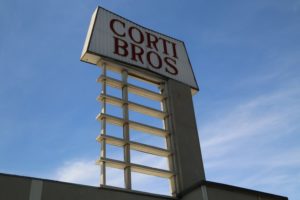
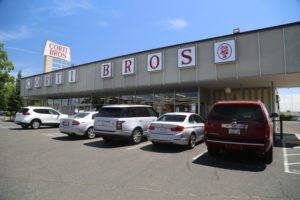
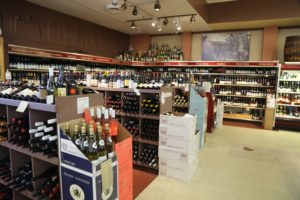
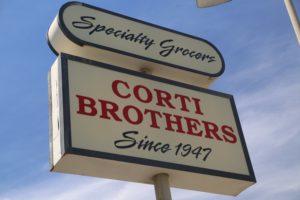
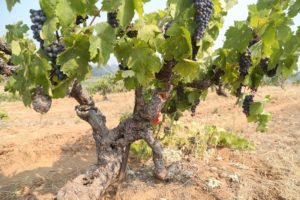
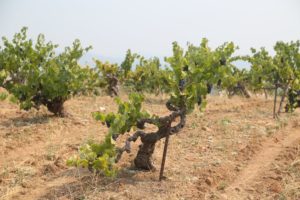
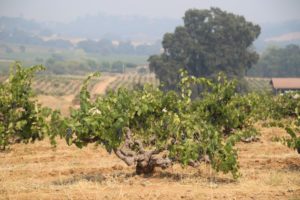
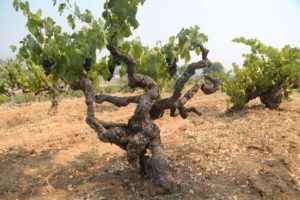
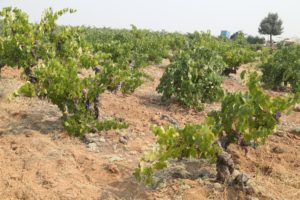
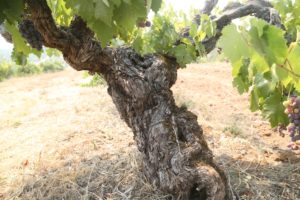
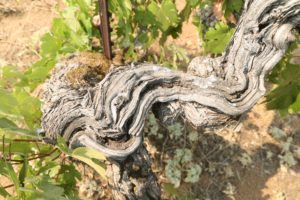

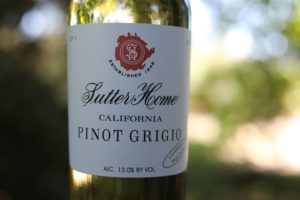
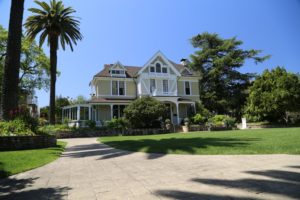
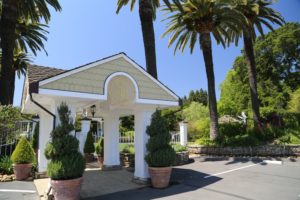
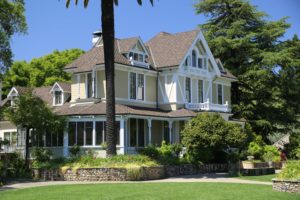
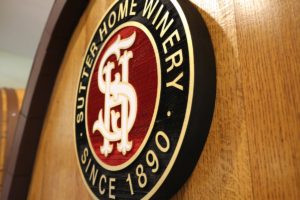
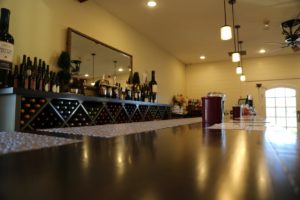
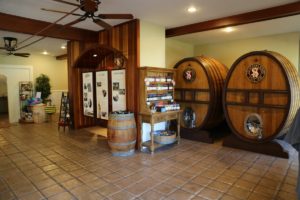
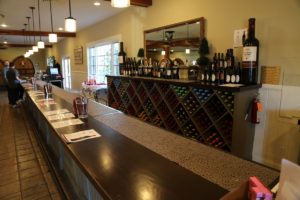
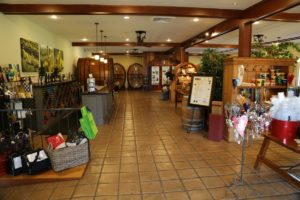
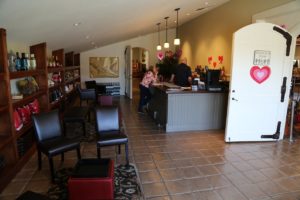
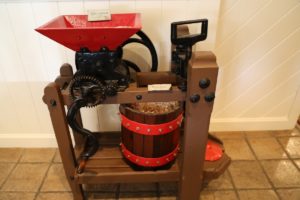
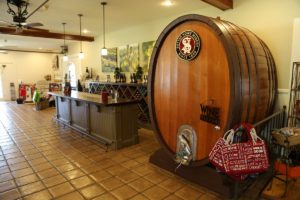
Senior retired P Nurse on Soc Security..Bought 4 pack Pinot Noir from Meijer
3195 Geler Dr, Cincinnati Ohio 45209 on 6/24/20..I poured about 120 ml but could only take 3 good taste. Wine was rancid.
Cost was $6.99 on sale from $7.99.
Meijer does not return alcohol.
Very disappointed being alone in 4 family apt still Ohio advising lockdown..(Asthmatic)..appreciate a return acknowledgement.
Susan – I hope you were able to get hold of the market where you purchased these wines.
Why was Sutter Homes rose’ wine discontinued